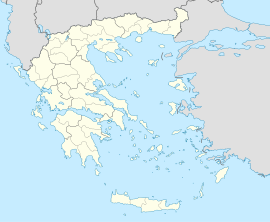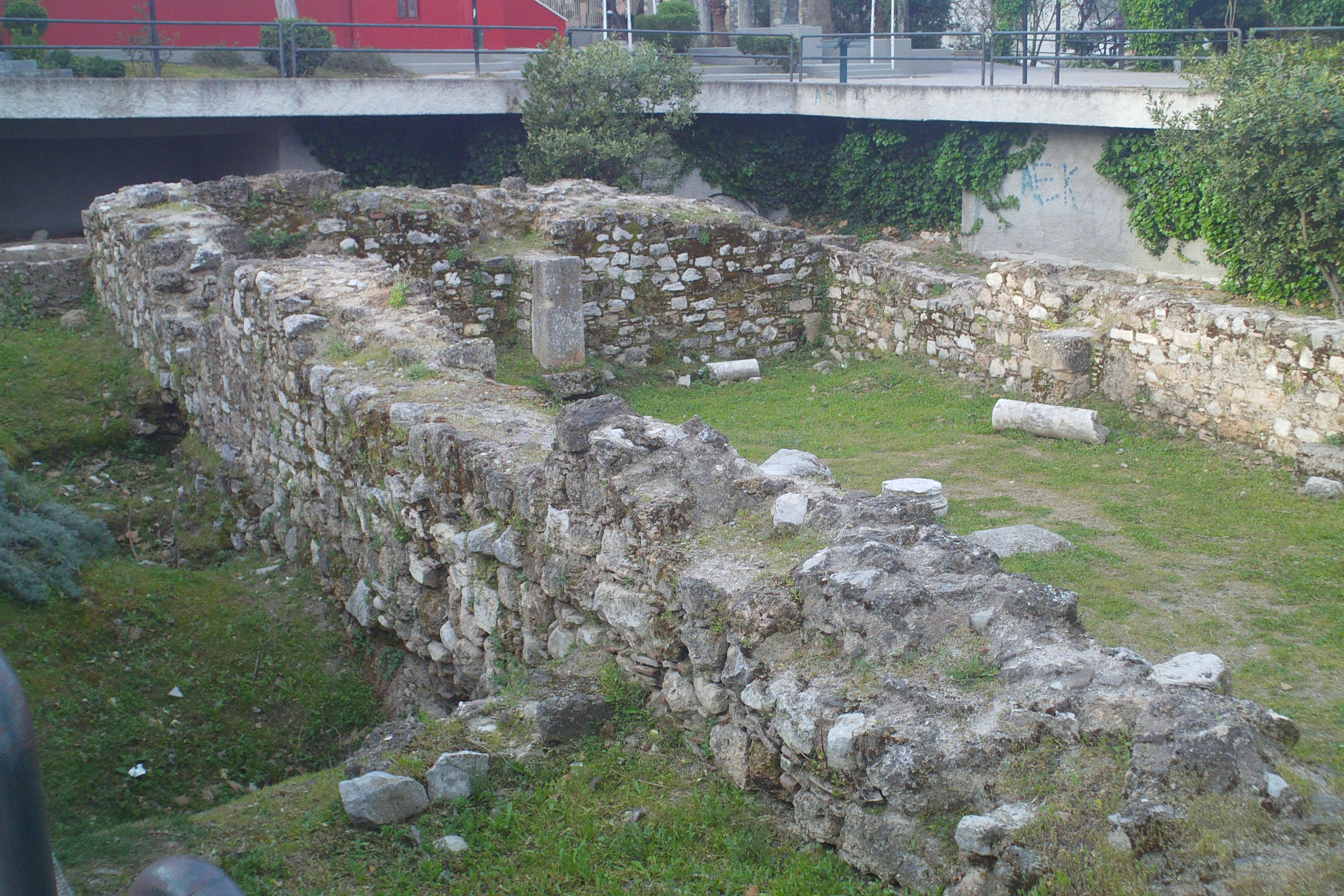Coordinates: 38°19′N 23°19′E
- Country Greece
- Administrative region Central Greece
 Regional unit Boeotia
Regional unit Boeotia
Area
- Municipality 830,112 km2(320,508 sq mi)
- Municipal unit 321,015 km2(123,945 sq mi)
- Elevation 215 m (705 ft)
Population (2011)[1]
Municipality 36,477
Municipality density 0.044/km2 (0.11/sq mi)
Municipal unit 25,845
Municipal unit density 0.081/km2 (0.21/sq mi)
Population 22883
- Area (km2) 143,889
- Time zone EET (UTC+2)
• Summer (DST) EEST (UTC+3)
Thebes (Ancient Greek: Θῆβαι, Thēbai, Modern Greek: Θήβα, Thíva) is a city in Boeotia, central Greece. It played an important role in Greek myth, as the site of the stories of Cadmus, Oedipus, Dionysus and others. Archaeological excavations in and around Thebes have revealed a Mycenaean settlement and clay tablets written in the Linear B script, indicating the importance of the site in the Bronze Age.
Thebes was the largest city of the ancient region of Boeotia and was the leader of the Boeotian confederacy. It was a major rival of ancient Athens, and sided with the Persians during the 480 BC invasion under Xerxes. Theban forces ended the power of Sparta at the Battle of Leuctra in 371 BC under the command of Epaminondas. The Sacred Band of Thebes (an elite military unit) famously fell at the battle of Chaeronea in 338 BC against Philip II and Alexander the Great. Prior to its destruction by Alexander in 335 BC, Thebes was a major force in Greek history, and was the most dominant city-state at the time of the Macedonian conquest of Greece. During the Byzantine period, the city was famous for its silks.
The modern city contains an Archaeological Museum, the remains of the Cadmea (Bronze Age and forward citadel), and scattered ancient remains. Modern Thebes is the largest town of the regional unit of Boeotia.

Geography
Thebes is situated in a plain, between Lake Yliki (ancient Hylica) to the north, and the Cithaeron mountains, which divide Boeotia from Attica, to the south. Its elevation is 215 m above mean sea level. It is about 50 km (31 mi) northwest of Athens, and 100 km (62 mi) southeast of Lamia. Motorway 1 and the Athens–Thessaloniki railway connect Thebes with Athens and northern Greece. The municipality of Thebes covers an area of 830.112 km2, the municipal unit of Thebes 321.015 km2 and the community 143.889 km2.[3]
In 2011, as a consequence of the Kallikratis reform, Thebes was merged with Plataies, Thisvi, and Vagia to form a larger municipality, which retained the name Thebes. The other three become units of the larger municipality.[4]
Mythic record
The record of the earliest days of Thebes was preserved among the Greeks in an abundant mass of legends which rival the myths of Troy in their wide ramification and the influence which they exerted upon the literature of the classical age. Five main cycles of story may be distinguished:
- The foundation of the citadel Cadmeia by Cadmus, and the growth of the Spartoi or "Sown Men" (probably an aetiological myth designed to explain the origin of the Theban nobility which bore that name in historical times).
- The building of a "seven-gated" wall by Amphion, and the cognate stories of Zethus, Antiope and Dirce.
- The tale of Laius, whose misdeeds culminated in the tragedy of Oedipus and the wars of the "Seven Against Thebes", the Epigoni, and the downfall of his house;
- The immolation of Semele and the advent of Dionysus.
- The exploits of Heracles.
The Greeks attributed the foundation of Thebes to Cadmus, a Phoenician king from Tyre (now in Lebanon) and the brother of Queen Europa. Cadmus was famous for teaching the Phoenician alphabet and building the Acropolis, which was named the Cadmeia in his honor and was an intellectual, spiritual, and cultural center.
Early history
Archaeological excavations in and around Thebes have revealed cist graves dated to Mycenaean times containing weapons, ivory, and tablets written in Linear B. Its attested name forms and relevant terms on tablets found locally or elsewhere include 𐀳𐀣𐀂, te-qa-i,[n 1] understood to be read as *Tʰēgʷai̮s (Ancient Greek: Θήβαις,Thēbais, i.e. "at Thebes", Thebes in the dative-locative case), te-qa-de,[n 2] for *Tʰēgʷasde (Θήβασδε,Thēbasde, i.e. "to Thebes"),[2][6] and te-qa-ja,[n 3] for *Tʰēgʷaja (Θηβαία, Thēbaia, i.e. "Theban woman").[2]
It seems safe[clarification needed] to infer that *Tʰēgʷai was one of the first Greek communities to be drawn together within a fortified city, and that it owed its importance in prehistoric days — as later — to its military strength. Deger-Jalkotzy claimed that the statue base from Kom el-Hetan in Amenhotep III's kingdom (LHIIIA:1) mentions a name similar to Thebes, spelled out quasi-syllabically inhieroglyphs as d-q-e-i-s, and considered to be one of four tj-n3-jj (Danaan?) kingdoms worthy of note (alongside Knossos and Mycenae). *Tʰēgʷai in LHIIIB lost contact with Egypt but gained it with "Miletus" (Hittite: Milawata) and "Cyprus" (Hittite: Alashija). In the late LHIIIB, according to Palaima,[7] *Tʰēgʷai was able to pull resources from Lamos near Mount Helicon, and from Karystos and Amarynthos on the Greek side of the isle of Euboia.
As a fortified community, it attracted attention from the invading Dorians, and the fact of their eventual conquest of Thebes lie behind the stories of the successive legendary attacks on that city.
The central position and military security of the city naturally tended to raise it to a commanding position among the Boeotians, and from early days its inhabitants endeavoured to establish a complete supremacy over their kinsmen in the outlying towns. This centralizing policy is as much the cardinal fact of Theban history as the counteracting effort of the smaller towns to resist absorption forms the main chapter of the story of Boeotia. No details of the earlier history of Thebes have been preserved, except that it was governed by a land-holding aristocracy who safeguarded their integrity by rigid statutes about the ownership of property and its transmission over time.
Ancient
- Epaminondas (c. 418-362 BC) general and statesman - Commanded the Theban forces at the battles of Leuktra and Mantinea
- Pelopidas (c. 420 - 365) general and statesman - Led rebellion against Sparta, commanded the Theban "Sacred band" at Leuktra
- Aristides (4th century BC) painter
- Nicomachus (4th century BC) painter
- Crates of Thebes (c. 365-c. 285 BC) Cynic philosopher
- Kleitomachos (3rd century BC) athlete
- Pindar (c. 522–443 BC), poet
Modern
- Haris Alexiou (born 1950), singer
- Panagiotis Bratsiotis, theologian
- Theodoros Vryzakis (c. 1814 – 1878) painter
https://en.wikipedia.org/wiki/Thebes,_Greece
Access :
Car:
https://www.google.gr/maps/place/Archeologiko+Mousio+Thivon/@38.322691,23.3153775,17z/data=!4m2!3m1!1s0x14a0fc23f9397c3f:0xbe7ff5d482cd2ace
Train:
http://www.trainose.gr/en/
Bus:
http://www.ktelthivas.gr/